I can normally be found writing news stories or running outreach events for the Department, but this year I decided to dust off my walking boots and tag along to Arran with our first years to find out what makes this fabled Island so geologically exciting. Let’s just say it didn’t disappoint, and in the post below I’ve managed to condense down what — according to our students and demonstrators — makes this trip so special.
The ferry ride to the Island
One of the trip highlights for us all had to be the sunset as we reached Arran on the ferry. We were full of anticipation — the students having seen their first outcrops on the Ayrshire coast earlier that day. This was our first glimpse of our home for the next week; the sun setting over the highest peak, Goat Fell. Arran looked more like a Greek Island — sparking a bit of friendly rivalry with our counterparts on the Spain fieldtrip, who were under a near perpetual rain cloud for their entire trip!
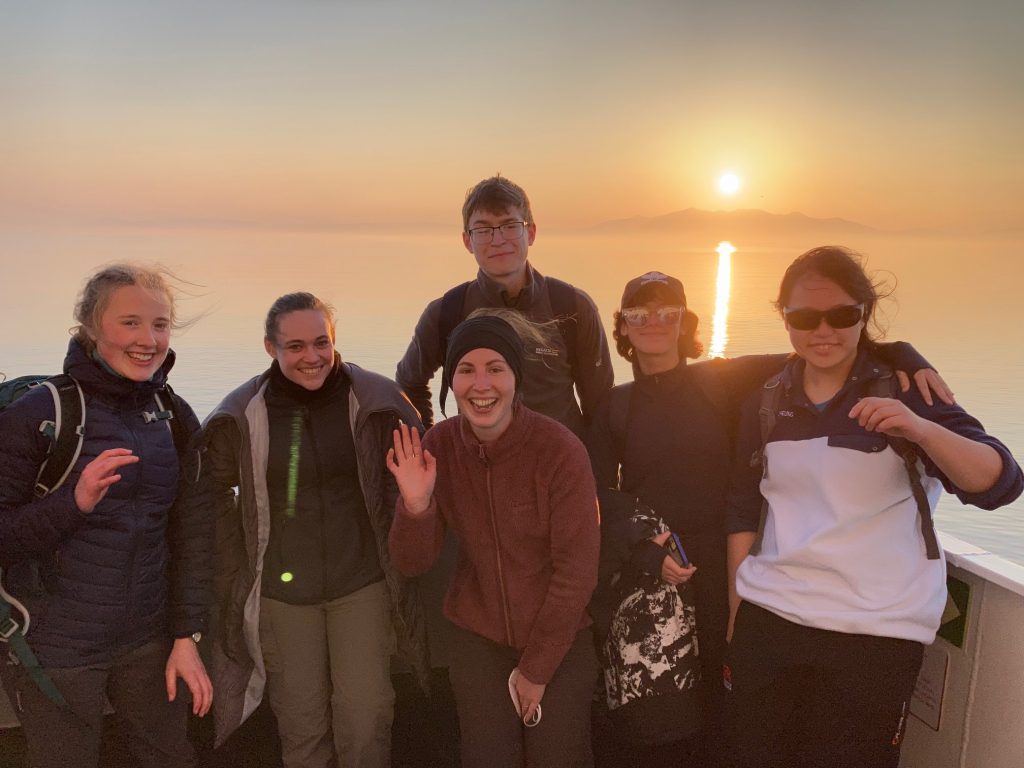
Me in the centre, enjoying being back in the field with students 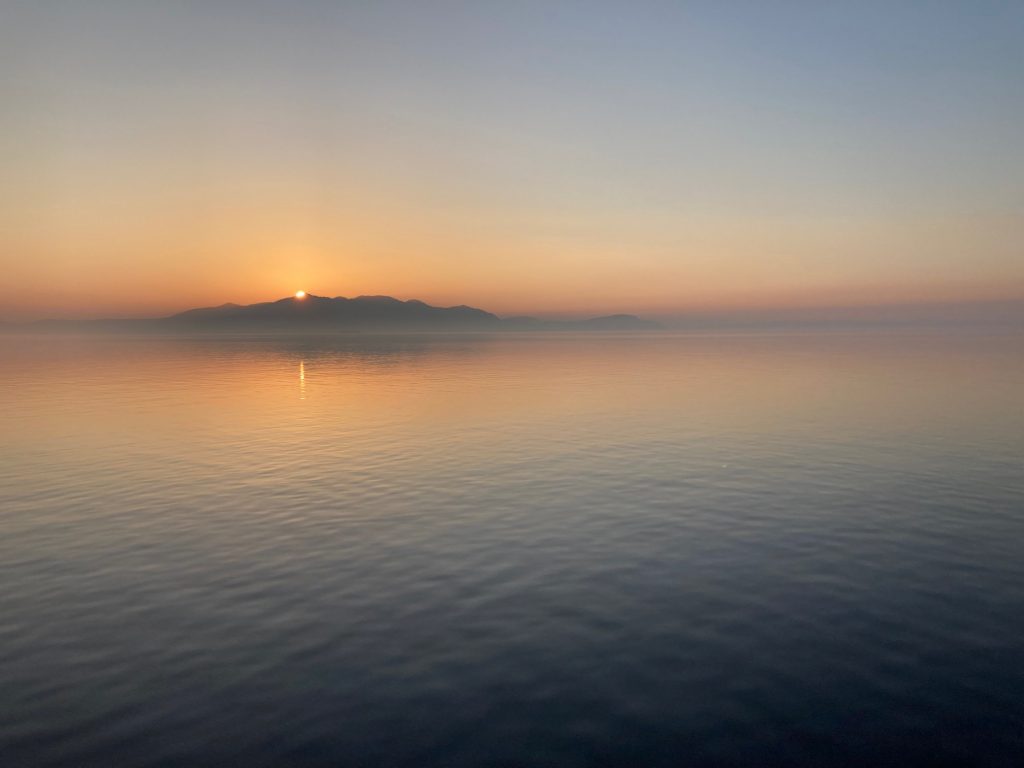
Sun setting over Goat Fell
Fossil lightning strikes in the New Red Sandstone
A student favourite. We encountered these beautiful fulgurites at one of the first localities of our first day on Arran, touring along the foreshore between Brodick and Corrie. Aside from the stunning cross bedding in the New Red Sandstone, the students were also really excited to find these curious structures in the rocks. Palaeo-weather never fails to impress!
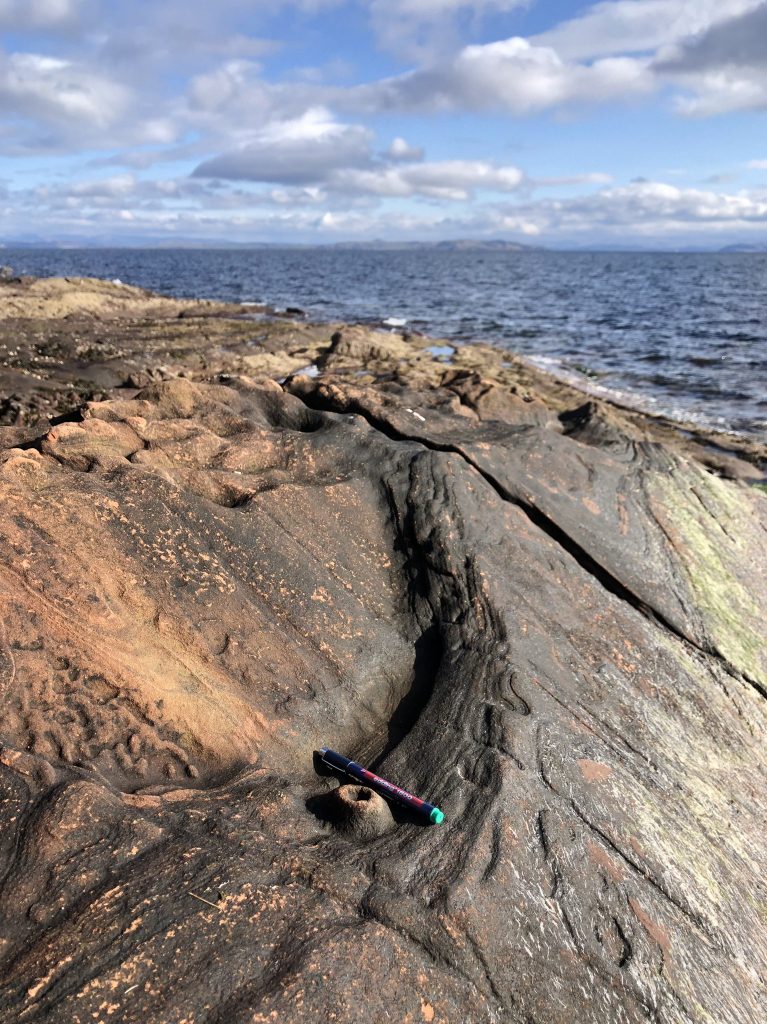
Fulgurite in the New Red Sandstone. Credit: Philippa Slay 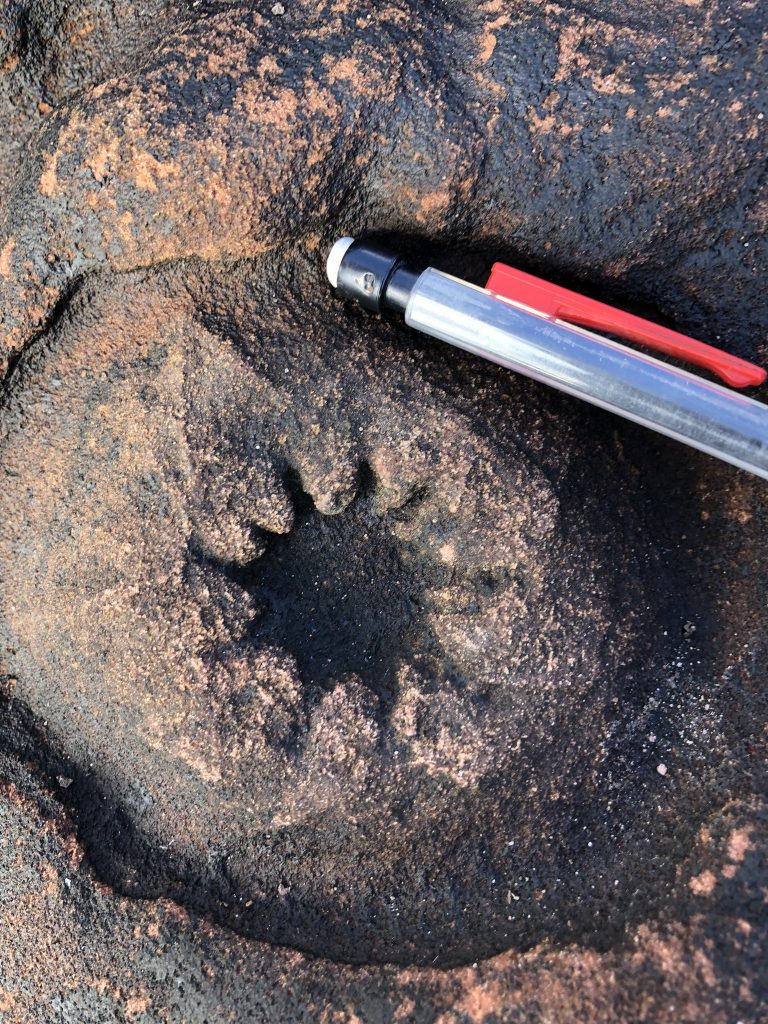
Fulgurite from above. Credit: Philippa Slay 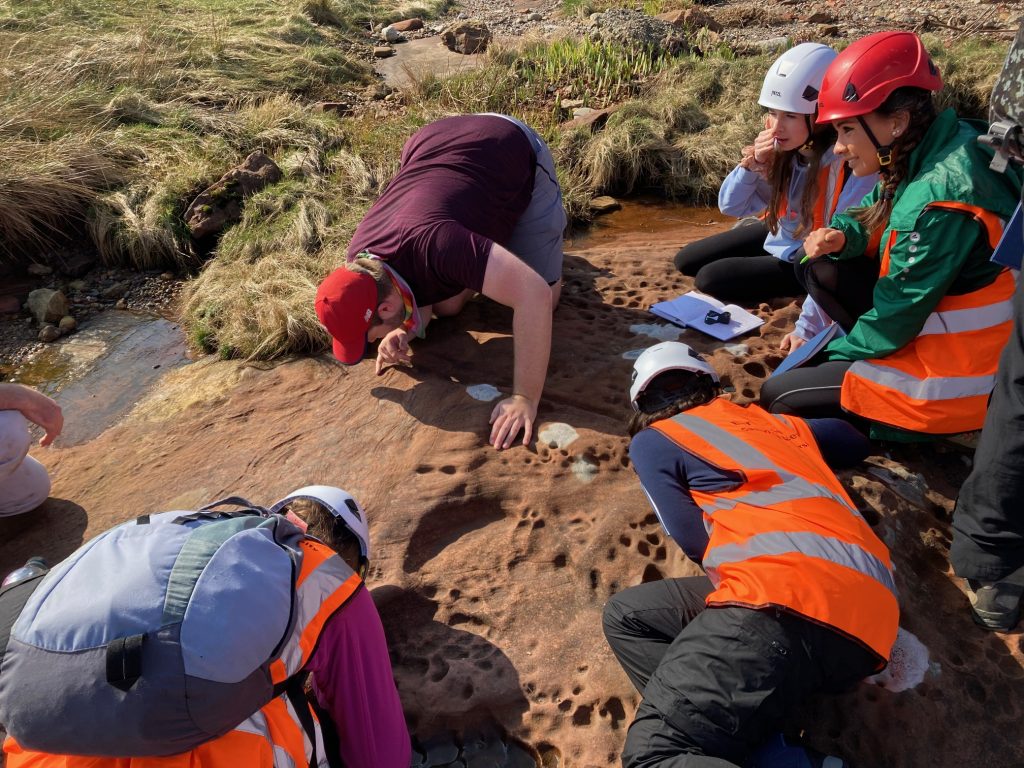
Students take a closer look at sedimentary structures in the New Red Sandstone
The Index Limestone
Another of the students top picks: this outcrop on the north coast of Arran was teaming with fossils (and also students looking for crinoids). We find a trilobite every few years or so in the Index Limestone, and this year one of the first years, Abby, found a beautifully preserved pygidium!


Credit: Sally Gibson
Beautiful mini-folds in the Dalradian
PhD student, Hassan Aftab Sheikh, took these photos of beautiful mini-folds in the Dalradian rocks of Arran’s NW coast. This was day 3 of the trip, so students could finally get out their compass-clinos and have a go at measuring plunge and plunge direction.
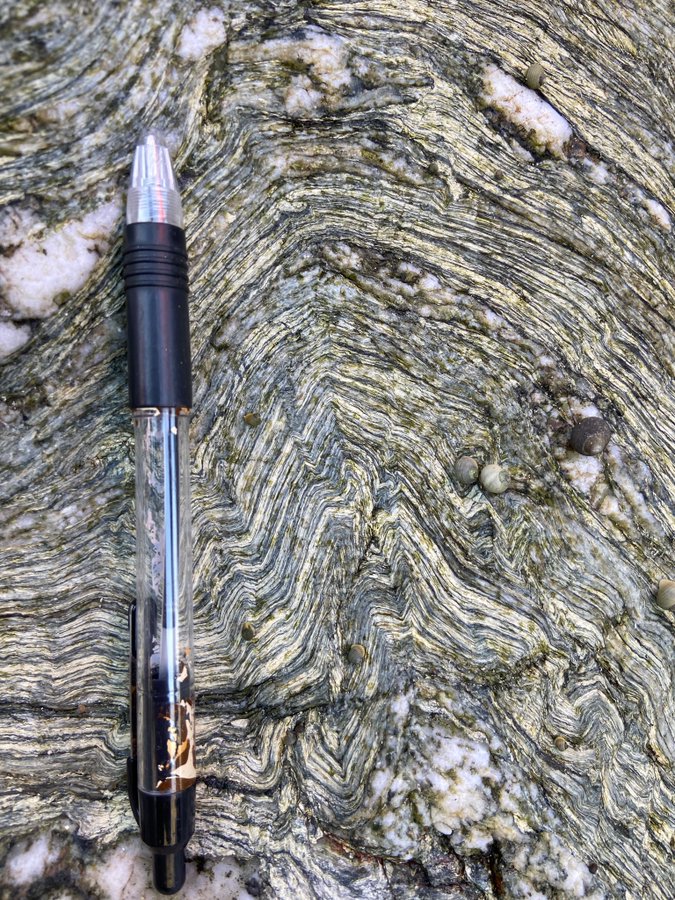
Drumadoon Sill
On our penultimate day on Arran we visited the infamous Doon. Students had a chance to draw some of their first large-scale sketches before heading to the rock-face for a closer look. One of our arty students, Imane, captured this magnificent hulk in all it’s glory in the drawing below.
Quartz-feldspar porphyry
Further along the from the Doon, we encountered a quartz-feldspar porphyry: one of the many sills in the area. It was post-doc Auriol Rae’s favorite rock of the trip, but also got us demonstrators a bit hot under the collar as we tried to disentangle its emplacement history. The porphyry contains xenoliths of the underlying dolerite sill, and the dolerite itself contains xenocrysts of feldspar and quartz which must have come from a similar magma to the porphyry. Which came first? We think they probably were contemporaneous.
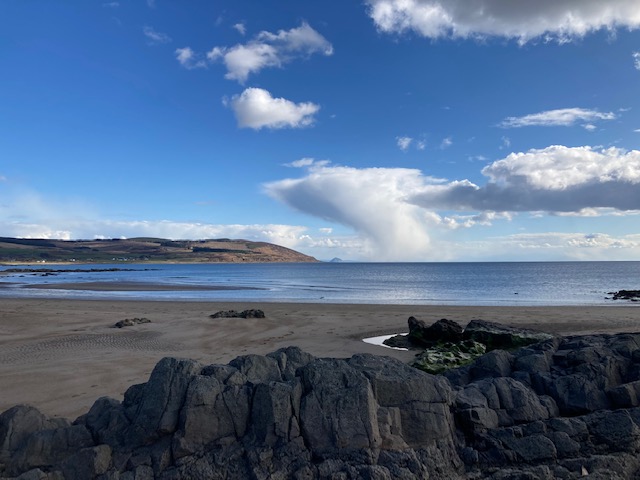
One of the sills in Blackwaterfoot 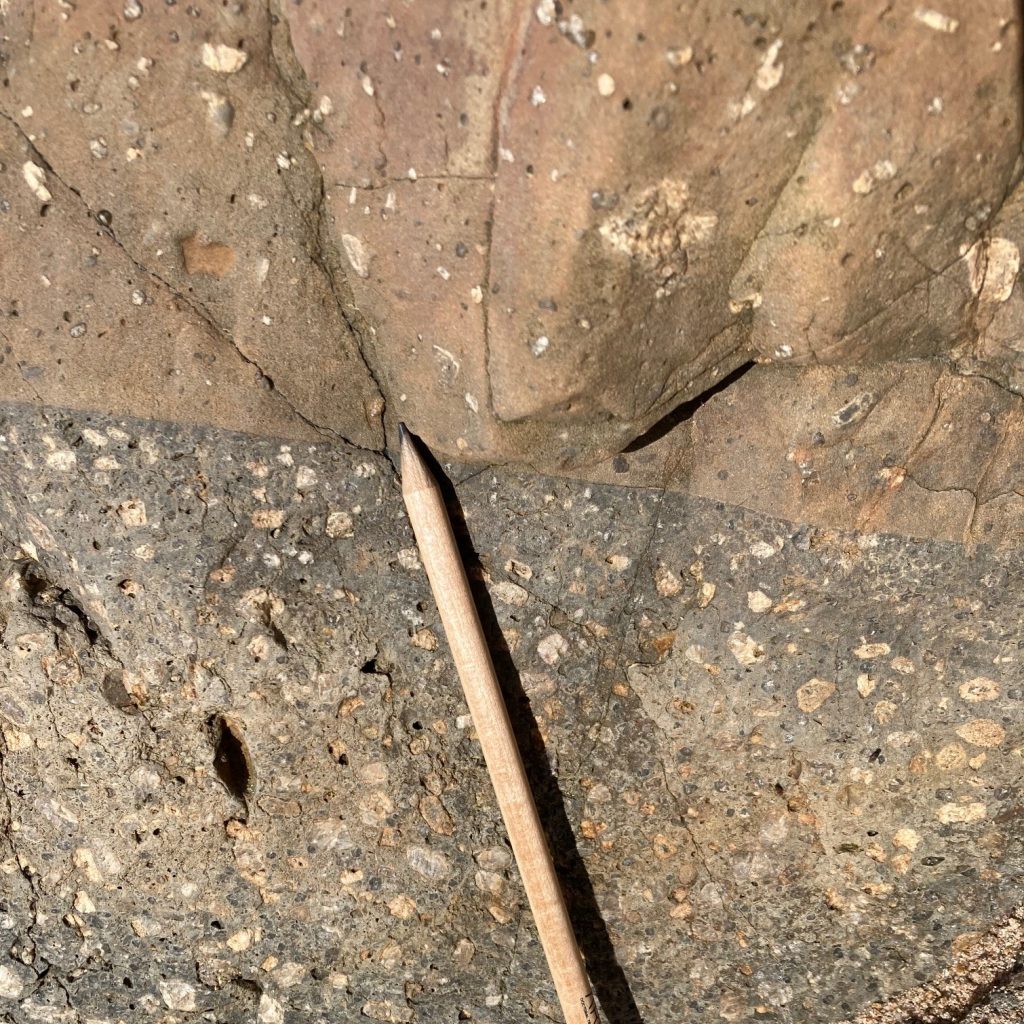
The Quartz-feldspar porphyry
Free day: Goat Fell and the Standing Stones
Of course, after a busy week of fieldwork we were ready to unwind. Being geologists we couldn’t totally escape from rocks…Students had a choice for the day: either climb Goat Fell for uninterrupted views of the Island and beyond, or a more chilled visit to the Machrie Moor Standing Stones followed by a tour of the Lochranza Distillery. Even at the distillery we talked geology: hearing how the local rocks impact water purity and distillation.
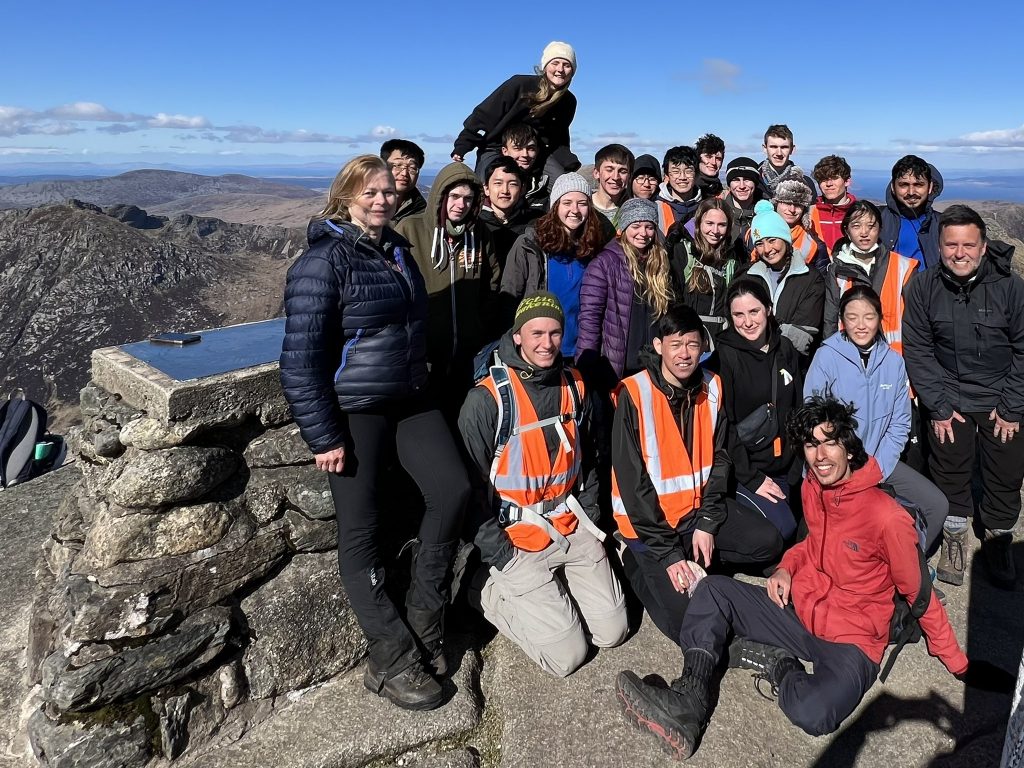
On top of Goat Fell – credit Hassan Aftab 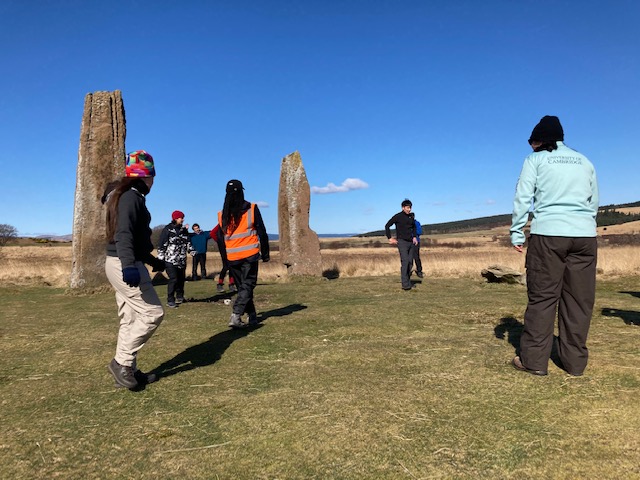
The Machrie Moor Standing Stones make good obstacles for playing tag!
Stargazing
Our fantastic lecturers — Sally Gibson, Alex Piotrowski, Nick Butterfield and David Al-Attar — kept us busy each evening with lively talks about Arran’s geology. Alex even led a small group of us in an astronomy lesson, taking advantage of the remote dark skies for stargazing (he had come prepared with telescope and astronomical binoculars!)
The food
A final vote from the demonstrators – the puddings at the Lochranza Field Centre! I don’t think any of us went hungry that week, and sitting down each evening to eat a three course meal concluded by ginger cake and custard (our #1 pudding of the trip), arctic roll or warm chocolate cake certainly kept up energy reserves! We realize now that none of us took photos of the puddings (too busy eating them…)
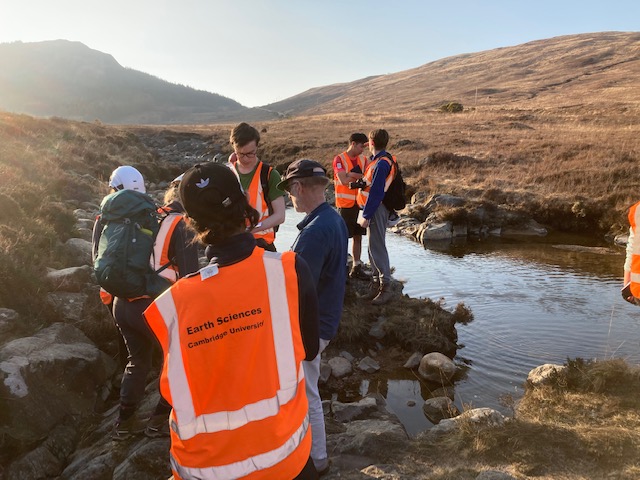
The culmination of a week’s hard work – students mapping in Glen Sannox 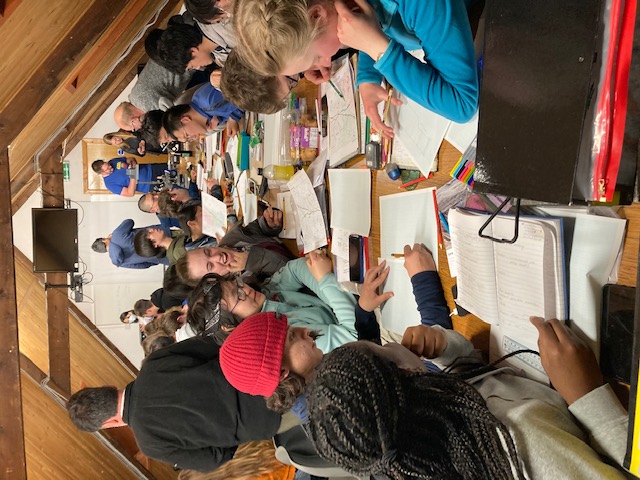
Discussing their maps and cross sections in the evening
A big thanks to our inspiring lecturers, enthusiastic students, and all that took care of us: Phil the bus driver and the staff at the Lochranza Field Centre!
To those who have been to Arran in previous years – what memories do you have of the trip? Can you add any of your own highlights in the comments?



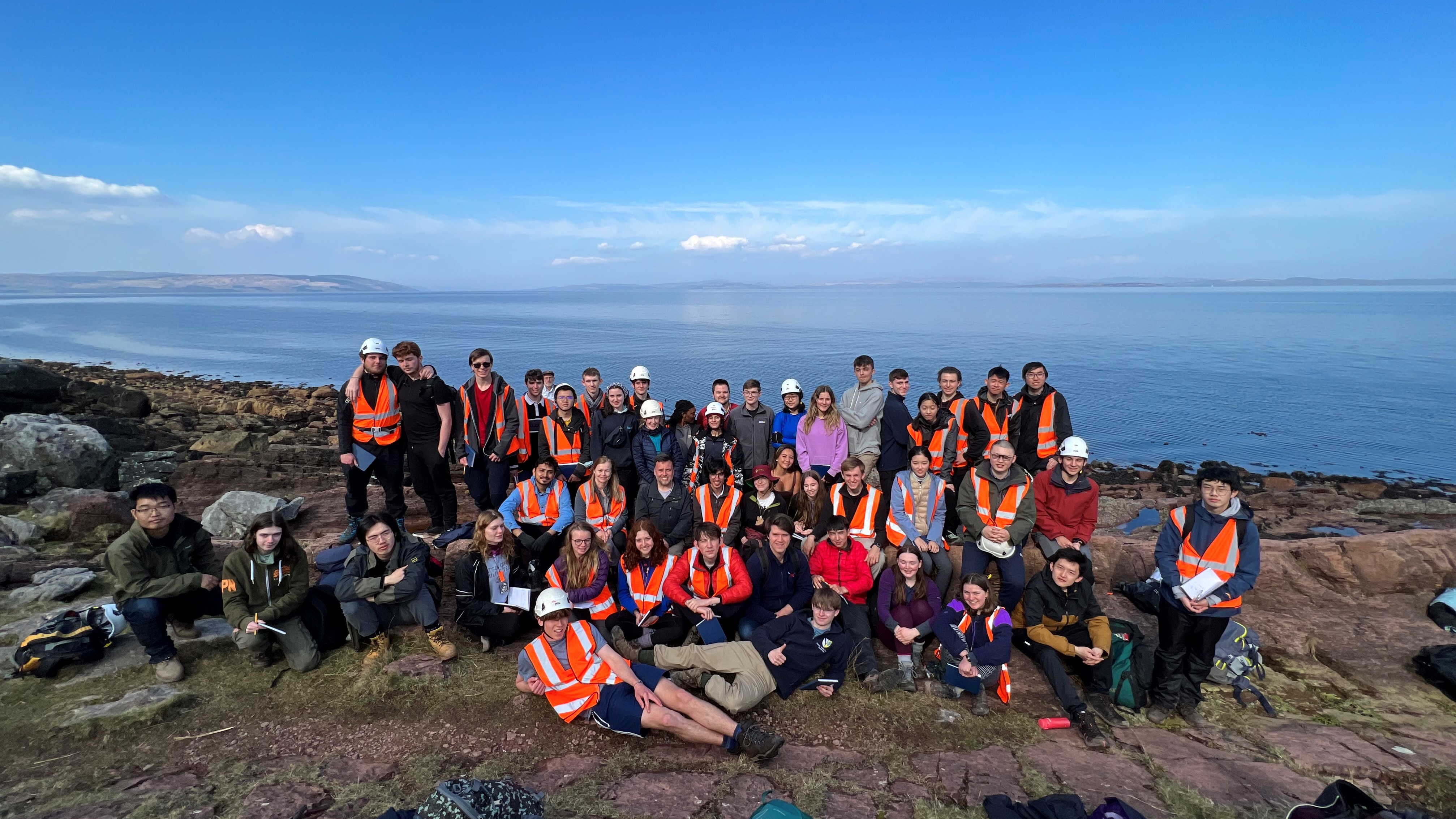


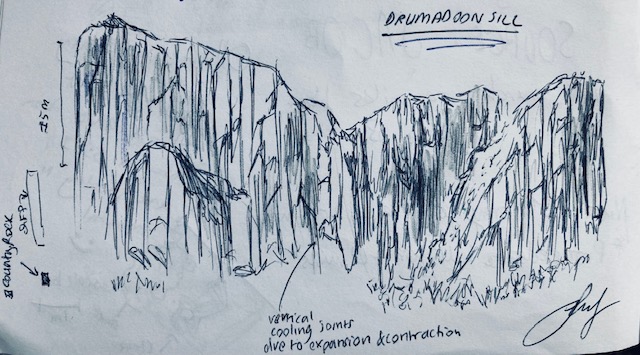
I remember going on the trip to Arran with WB Harland about 1964. One day, he took us on an exhausting hike, up and down glacial valleys, ending the day with a climb to the top of Goat Fell; as we arrived, knackered, his wife (?) appeared walking the dog for an afternoon stroll.
What none of the students today could experience is the sight of Brian Harland (Reader in Geology and Arctic Geology Expert) at least 50m in front of the nearest students and leading a very long train of students up Goat Fell. Brian was not exactly young in 1971, but his stamina and speed was both amazing and depressing to us “youngsters”. I can still see him way in front of me. I seem to remember that this hike was placed at the start of the trip. Good to see the fulgurites again. A Carb Limestone exposure has also seared itself to my memory.
On the 1955 Arran trip Dr Harland pointed out to us that the Dinosaur footprints visible on the shore in front of the Brodick hotel were (in the immortal words of Dr. Samuel Johnson ) “headed South “ even in the Mesozoic!
Was struck by the bed of wonderful productids in the Corrie Lst in life position (Easter 1982). And, of course, the Dalradian – we’d nothing like that in Yorkshire!
I was on the Arran trip in 1987 and can remember it snowing while we were working on the foreshore – the joys of British weather! It was horrible all week, and on the way back to Ardrossan on the ferry, such bad weather blew up that we had to divert to Glasgow. This was only a couple of weeks after the Herald of Free Enterprise ferry disaster, and we were all petrified. I should make a return trip in the hope of seeing (for the first time!) the views so beautifully captured in this blog.
Thank you for the above, you clever bunch of people! I’m a retired lawyer with an interest in fossils and as I went up and down Goatfell yesterday, was sure as I carefully placed my doddery old feet, that O was looking at animal fossils. My knowledge is so sparse that I then got to wondering if I could be imagining it, since I thought that rock produced in a volcanic area wouldn’t contain fossils…so I Googled, and here were your comments! At 64, I’m still keen to learn about the amazing planet we inhabit!